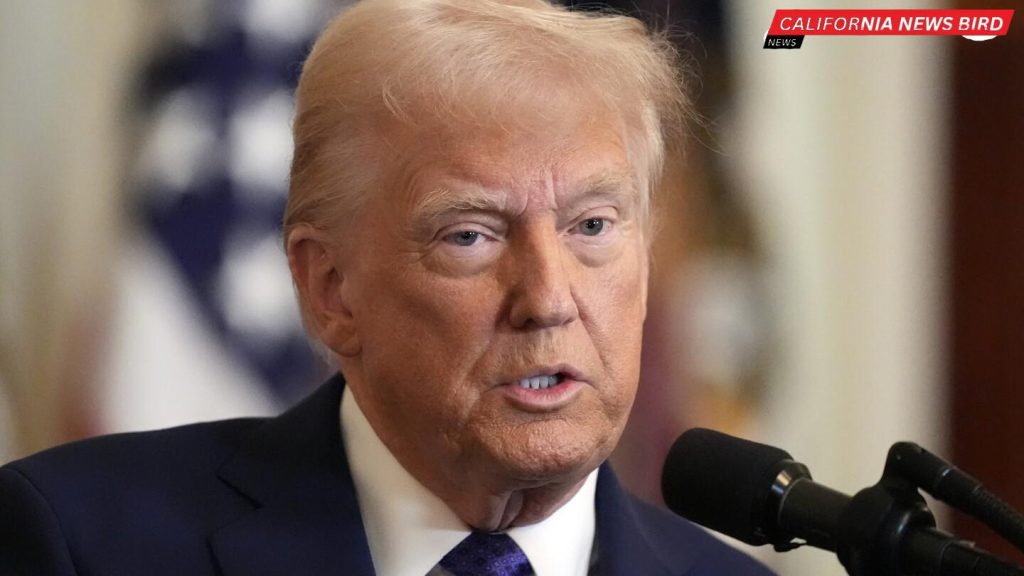/ Feb 02, 2025
Trending

In a bold move that is stirring up a lot of conversations across the country, former President Donald Trump has recently signed new executive orders that aim to reshape how certain topics are taught in American schools. These orders focus specifically on critical race theory and other related subjects, which have become hot topics in education. According to these new rules, schools could face significant penalties, including the loss of federal funding, if they continue to teach these concepts. It’s a big change that’s making many people concerned and curious about its impact.
Critical race theory (CRT) is an academic framework that originated in law schools to understand how race and racism interact with social structures and laws. It has been around for decades but recently became a flashpoint in educational debates. Supporters argue that CRT is essential to discussing America’s history of racial inequality, while opponents claim it promotes division and discomfort among students.
Trump’s executive orders, signed on a Wednesday, specifically target K-12 schools that teach critical race theory and gender ideology. His administration claims that these concepts amount to “radical indoctrination,” arguing that they create a divisive environment for students. As part of these orders, the Education Department will prioritize the enforcement of these prohibitions, putting schools at risk of losing federal funds if they do not comply.
The reaction to Trump’s orders has been mixed. Many educators and civil rights advocates are concerned that these changes will limit their ability to discuss important historical and social issues in the classroom. Randi Weingarten, a prominent teacher’s union leader, has described the orders as divisive and damaging, stating that they instill fear rather than encouraging open dialogue among students.
If schools do not align their teachings with the new orders, they face the possibility of losing vital federal funding. This is crucial for many public schools that rely heavily on these funds for resources like staff salaries, educational materials, and after-school programs. The fear is that these orders will lead to a more censored educational environment, where teachers might avoid discussing essential topics out of fear of retribution.
As schools prepare for the upcoming academic year, there are many questions about how this will all play out. The Education Department has been tasked with creating a plan to enforce these new rules within a tight timeline of 90 days, which has caused tensions among educators who already feel overwhelmed. In addition, Trump’s plan also looks to reinstate the 1776 Commission, which emphasizes a version of American history that some believe glosses over the country’s issues with race and inequality.
Critics of the executive order express fears that the guidelines are overly vague and could discourage open discussions about race and identity. This move has opened up a broader debate about what students should learn in school and how history and social issues should be taught. Many advocates, including the group Human Rights Watch, firmly believe it is crucial for educational curriculums to include discussions about systemic discrimination to help students understand the world around them.
| Key Elements of Trump’s Executive Orders | Description |
|---|---|
| Target Areas | Critical race theory and gender ideology in K-12 schools. |
| Potential Consequences | Loss of federal funding for non-compliance. |
| Timeline for Enforcement | 90 days for the Education Department to create a plan. |
| Public Response | Mixed reactions from educators, civil rights groups, and parents. |
As these events unfold, the conversation around educational content in the United States will likely continue to evolve, drawing in students, parents, educators, and lawmakers in a debate about the future of learning in America.
In a bold move that is stirring up a lot of conversations across the country, former President Donald Trump has recently signed new executive orders that aim to reshape how certain topics are taught in American schools. These orders focus specifically on critical race theory and other related subjects, which have become hot topics in education. According to these new rules, schools could face significant penalties, including the loss of federal funding, if they continue to teach these concepts. It’s a big change that’s making many people concerned and curious about its impact.
Critical race theory (CRT) is an academic framework that originated in law schools to understand how race and racism interact with social structures and laws. It has been around for decades but recently became a flashpoint in educational debates. Supporters argue that CRT is essential to discussing America’s history of racial inequality, while opponents claim it promotes division and discomfort among students.
Trump’s executive orders, signed on a Wednesday, specifically target K-12 schools that teach critical race theory and gender ideology. His administration claims that these concepts amount to “radical indoctrination,” arguing that they create a divisive environment for students. As part of these orders, the Education Department will prioritize the enforcement of these prohibitions, putting schools at risk of losing federal funds if they do not comply.
The reaction to Trump’s orders has been mixed. Many educators and civil rights advocates are concerned that these changes will limit their ability to discuss important historical and social issues in the classroom. Randi Weingarten, a prominent teacher’s union leader, has described the orders as divisive and damaging, stating that they instill fear rather than encouraging open dialogue among students.
If schools do not align their teachings with the new orders, they face the possibility of losing vital federal funding. This is crucial for many public schools that rely heavily on these funds for resources like staff salaries, educational materials, and after-school programs. The fear is that these orders will lead to a more censored educational environment, where teachers might avoid discussing essential topics out of fear of retribution.
As schools prepare for the upcoming academic year, there are many questions about how this will all play out. The Education Department has been tasked with creating a plan to enforce these new rules within a tight timeline of 90 days, which has caused tensions among educators who already feel overwhelmed. In addition, Trump’s plan also looks to reinstate the 1776 Commission, which emphasizes a version of American history that some believe glosses over the country’s issues with race and inequality.
Critics of the executive order express fears that the guidelines are overly vague and could discourage open discussions about race and identity. This move has opened up a broader debate about what students should learn in school and how history and social issues should be taught. Many advocates, including the group Human Rights Watch, firmly believe it is crucial for educational curriculums to include discussions about systemic discrimination to help students understand the world around them.
| Key Elements of Trump’s Executive Orders | Description |
|---|---|
| Target Areas | Critical race theory and gender ideology in K-12 schools. |
| Potential Consequences | Loss of federal funding for non-compliance. |
| Timeline for Enforcement | 90 days for the Education Department to create a plan. |
| Public Response | Mixed reactions from educators, civil rights groups, and parents. |
As these events unfold, the conversation around educational content in the United States will likely continue to evolve, drawing in students, parents, educators, and lawmakers in a debate about the future of learning in America.
It is a long established fact that a reader will be distracted by the readable content of a page when looking at its layout. The point of using Lorem Ipsum is that it has a more-or-less normal distribution of letters, as opposed to using ‘Content here, content here’, making it look like readable English. Many desktop publishing packages and web page editors now use Lorem Ipsum as their default model text, and a search for ‘lorem ipsum’ will uncover many web sites still in their infancy.
It is a long established fact that a reader will be distracted by the readable content of a page when looking at its layout. The point of using Lorem Ipsum is that it has a more-or-less normal distribution of letters, as opposed to using ‘Content here, content here’, making it look like readable English. Many desktop publishing packages and web page editors now use Lorem Ipsum as their default model text, and a search for ‘lorem ipsum’ will uncover many web sites still in their infancy.
The point of using Lorem Ipsum is that it has a more-or-less normal distribution of letters, as opposed to using ‘Content here, content here’, making

The point of using Lorem Ipsum is that it has a more-or-less normal distribution of letters, as opposed to using ‘Content here, content here’, making it look like readable English. Many desktop publishing packages and web page editors now use Lorem Ipsum as their default model text, and a search for ‘lorem ipsum’ will uncover many web sites still in their infancy.

The information provided by California News Bird is for general informational purposes only. While we strive to ensure that the content we publish is accurate, current, and reliable, we make no representations or warranties of any kind, express or implied, about the completeness, accuracy, reliability, or availability of the information, products, or services contained on our website.